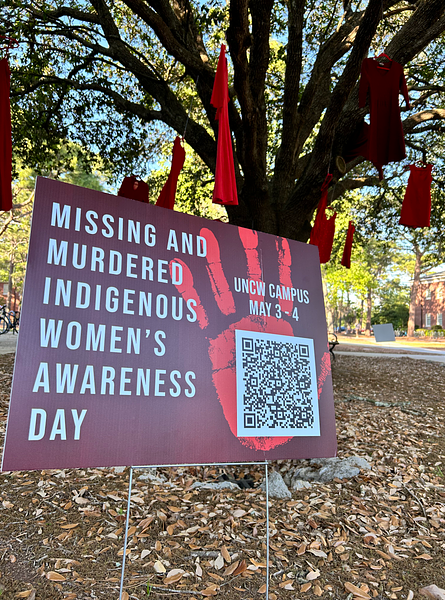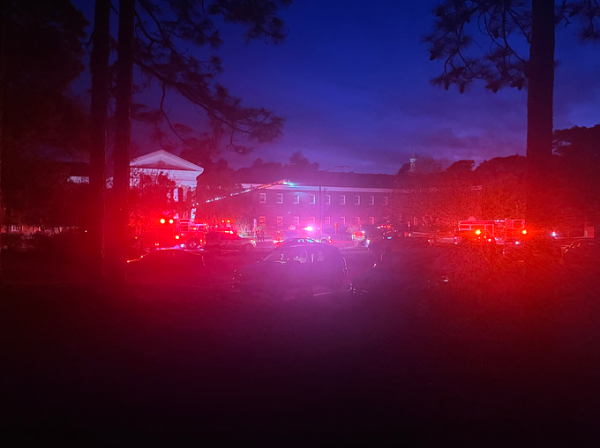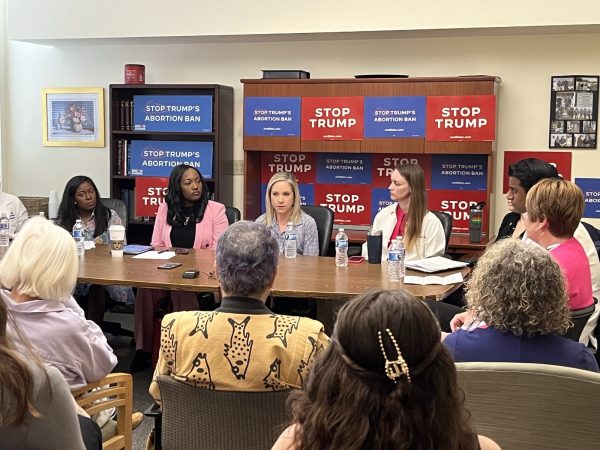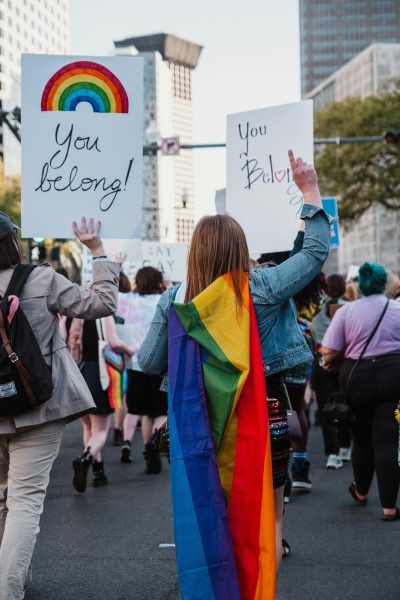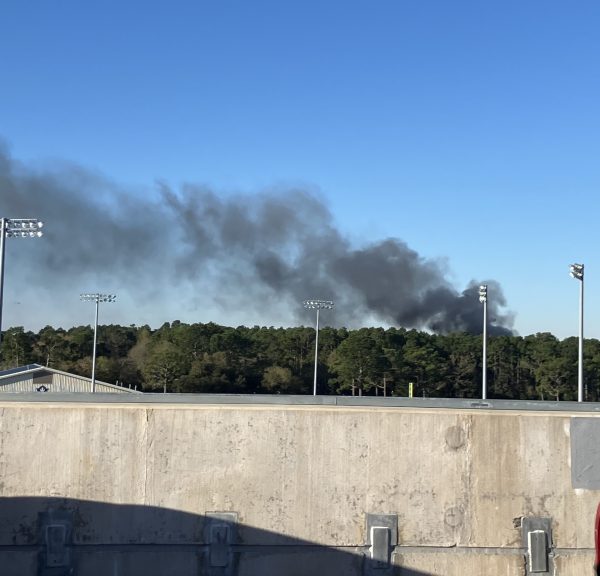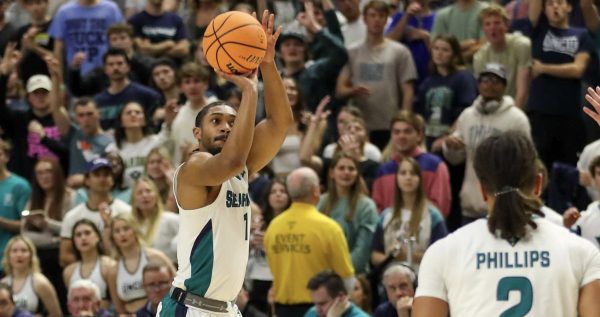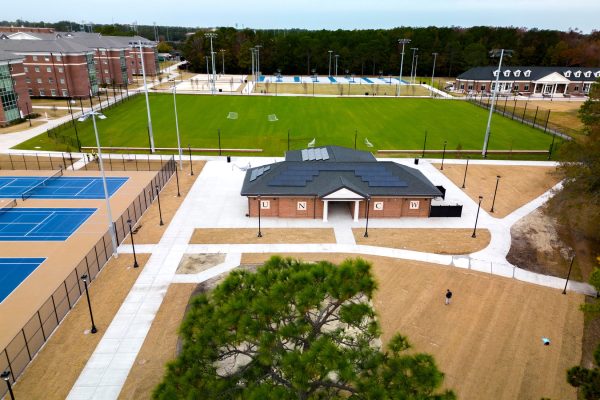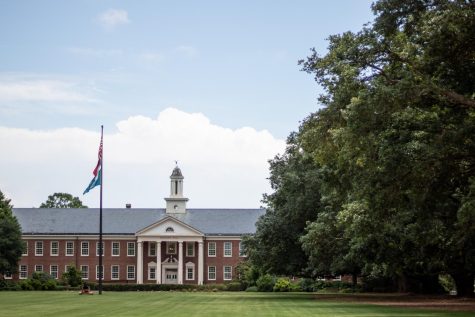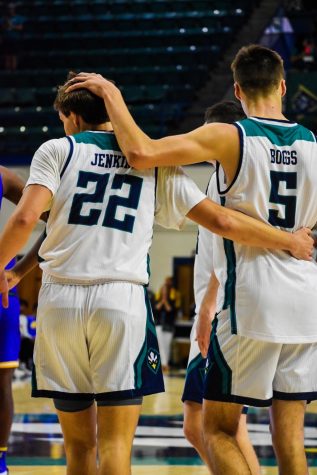Soaring talent from college sends WNBA into fifth season
April 30, 2001
The first intercollegiate women’s basketball game took place in 1896 between Stanford and California. Stanford won, 2-1.
The WNBA, 105 years later, is heading into its fifth season of play, making it the longest-lasting women’s professional basketball league in the history of the United States. The 16 WNBA teams averaged 69 points per game during the 2000 season, and unlike in that first women’s game, players in the WNBA are allowed, encouraged even, to play defense.
Defense and all, the league’s level of play is going to continue to go up, as the 2001 draft boasts the strongest senior class in the five-year history of the league.
This is the strongest WNBA draft other than the 1999 draft that featured players from the rival American Basketball League, which folded that year.
“When you talk about a draft,” said Utah guard Jennifer Azzi, who was a founding player of ABL, “that was the draft of all drafts. I don’t think you’ll ever have that much talent again, because you have players from the past 10 years.”
With the best women’s basketball players in the country playing in one league and the strongest crop of rookies the league has ever had, WNBA teams are going to continue to get deeper.
Last year two-time WNBA MVP Cynthia Cooper retired. Regardless, the level of play this year looks to be higher than ever. No one is trying to replace Cooper, but no one has to. Women’s basketball is a dynamic game, and this year’s rookies will, in time, help the WNBA evolve into an even stronger league.
“I don’t think that anyone is going to come in and dominate the league by any means,” Azzi said. “But I think the rise in talent over time is going to be really good.”
Portland’s Jackie Stiles, the No. 4 pick in the draft, has already carved her piece of history in college basketball, smashing the NCAA scoring record with 3,393 career points.
Stiles is part of a generation of players who have learned to create their own shots, a skill that the bulk of women’s basketball players in the past did not possess.
Seattle’s No. 1 overall draft pick, Lauren Jackson, a native of Australia, was considered before the draft to be the best player in the world not yet in the WNBA. The best in the world.
For the first time in United States history, a women’s professional basketball league is attracting worldwide talent.
In fact, Jackson had at least two teams looking to trade big-name players for the first overall pick. Washington considered offering Chamique Holdsclaw, another starter and their ninth pick in exchange for Seattle’s No. 1 pick. Los Angeles proposed, at one point, to trade starters DeLisha Milton and Ukari Figgs for the Seattle’s pick. The Storm, which had a league-worst 6-26 record last season, kept its No. 1 pick.
Kelly Miller and Tamika Catchings were drafted third and fourth, ahead of Naismith and Associated Press Player of the Year Ruth Riley, who was the No. 5 pick.
Clearly, women’s basketball was not always, to be blunt, good. Even after society let go of the painful idea that strenuous physical activity was harmful to women’s reproductive organs, and after women’s college basketball stopped adapting mind-boggling rules designed to prevent this horrible decline in reproductive ability, the women’s game was still not very good.
“I used to hate women’s basketball,” columnist Sally Jenkins wrote in a Washington Post article. “I’d go to the Final Four and I’d see heavy, doughy babes who couldn’t jump, you could barely slip a credit card under their sneakers, and they shot air balls. They made me cringe for my gender.”
But since the advent of Title IX, a law prohibiting gender discrimination in high school and college sports, female participation in sports has skyrocketed. Later, college programs like Tennessee and Connecticut attracted more national attention than ever before, and more girls started realizing that they could have a future in basketball.
The fifth season of the WNBA, 2001, the players in this year’s draft mark the first generation of players not yet in college when the league tipped off. From this year on, players entering the WNBA will have had, for the first time, an abundance of female athletes to look up to growing up.
“Every year it’s going to get better,” said Azzi, who is 32 years old, “because, when these players were younger, they had a chance to think about playing professionally, whereas we didn’t.”
The WNBA is not the first women’s professional basketball league in the United States, but it has lasted longer than its predecessors. In 1991, for example, the Liberty Basketball Association featured shorter courts, lower rims and players in unitards. It folded after one exhibition game. The aforementioned ABL had success in some of its markets, but was ultimately overwhelmed by the NBA-backed WNBA.
And now, for the first time in history, women’s basketball has found real success by marketing it as basketball. Players like Lisa Leslie, Rebecca Lobo and Stiles are all household names.
And they never even had to wear unitards.
